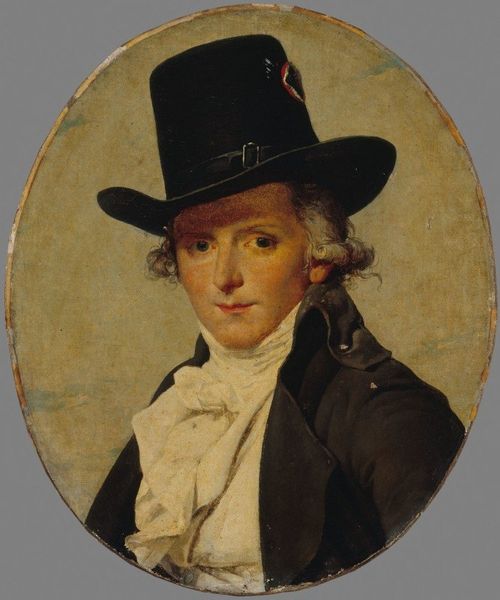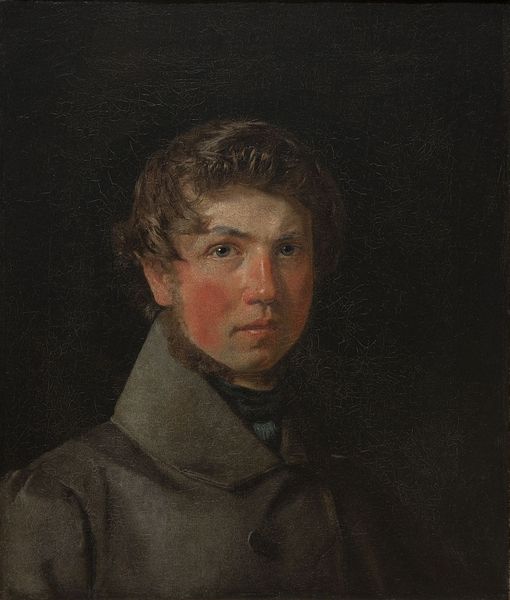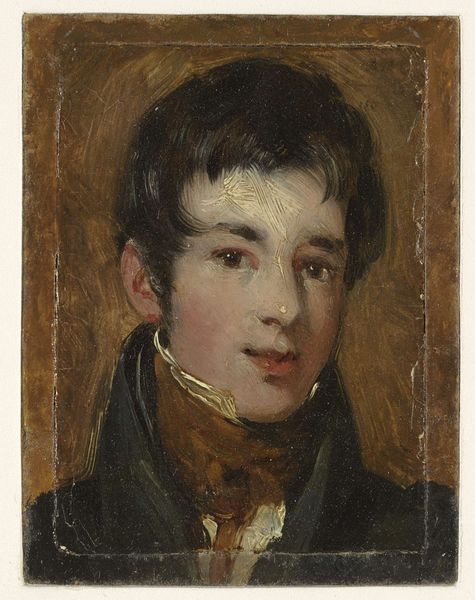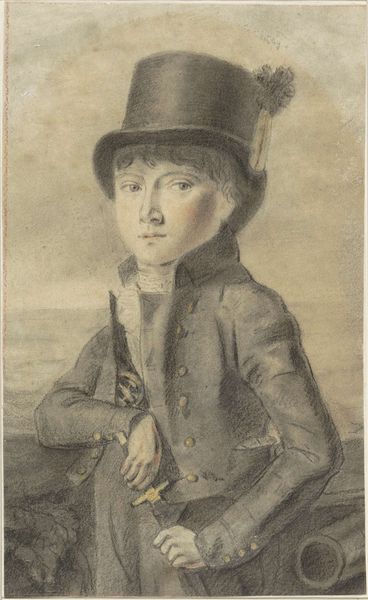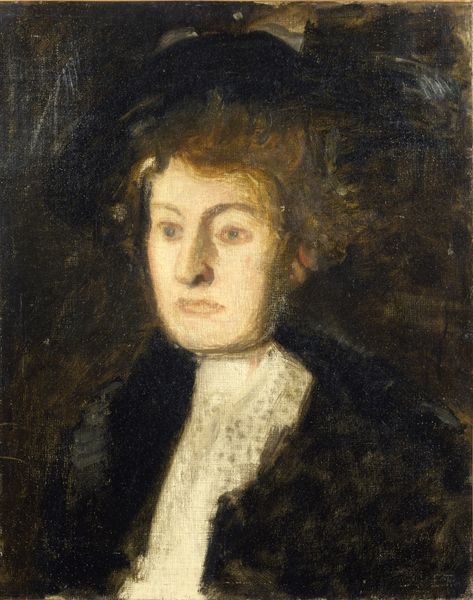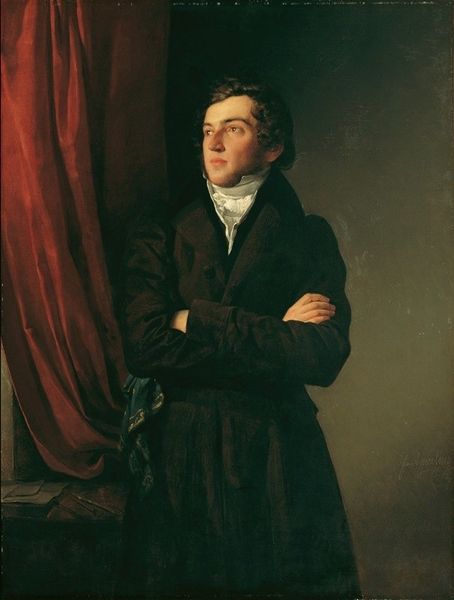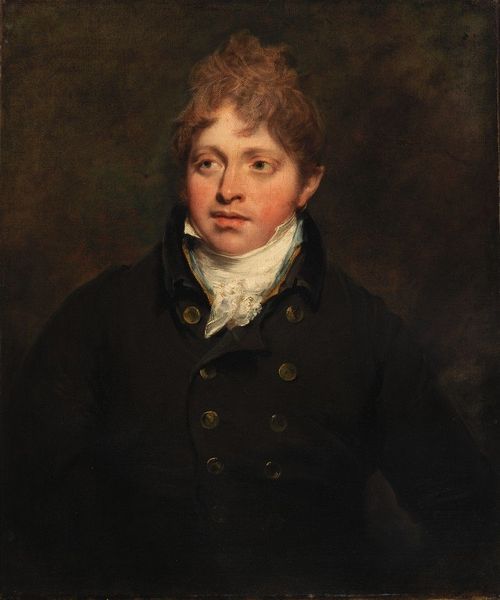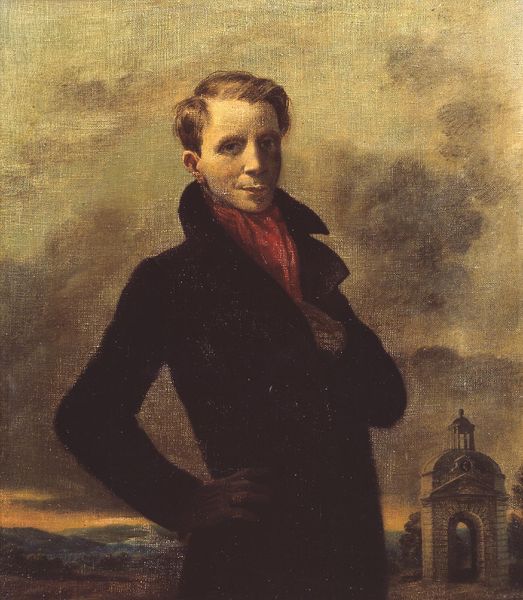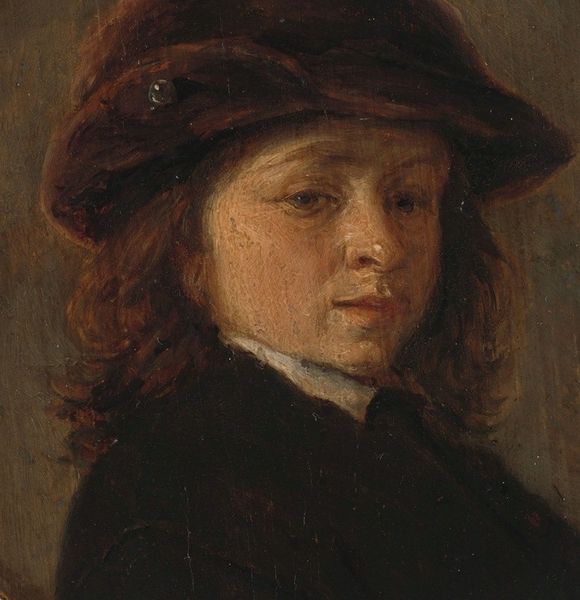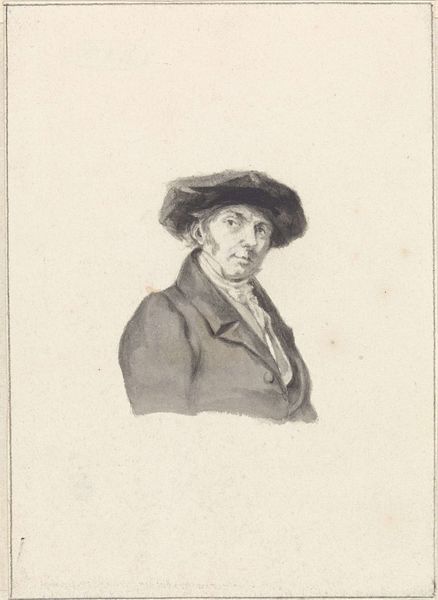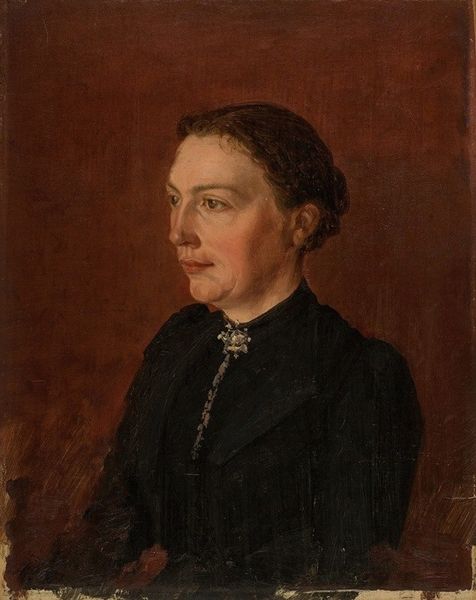
painting, oil-paint
#
portrait
#
painting
#
oil-paint
#
romanticism
#
history-painting
Copyright: Public Domain: Artvee
Curator: Standing before us is Friedrich von Amerling's "Portrait of His Brother Andreas." Executed in oil, this work certainly resonates with the tenets of Romanticism. Editor: My initial impression is one of melancholy, tinged with hope. The upward gaze of the subject contrasts with the subdued palette and shadowy background. The brushwork is visible and quite expressive, adding texture and dynamism. Curator: Absolutely. Note how Amerling masterfully utilizes chiaroscuro to sculpt Andreas's face, drawing our attention to the subtle interplay of light and shadow. This heightens the emotional intensity of the piece. I suggest we also examine how the hat becomes an extension of the romantic hero, contrasting him to the background’s dark brushstrokes of sea and land. Editor: And observe the background—a glimpse of a hazy seascape. It serves as more than just a setting, offering a contextual frame around the man portrayed. Was the artist attempting to historicize the individual within the context of 19th century Europe and Romantic art production? Curator: Precisely! This technique allows the artist to construct an intellectual and symbolic conversation. One might infer some historical details as well, for example the high collared shirt alludes to high social status, while simultaneously constricting Andreas. Editor: Indeed. The garment signifies status and modernity. Amerling creates a figure caught between worlds. Curator: It leaves me wondering what internal conflicts and artistic drives inspired the creation and, no less significantly, reception, of pieces such as these. The semiotics in Romanticism suggest more than the eye may at first perceive. Editor: Amerling's "Portrait of His Brother Andreas," becomes more than a mere likeness—it is a cultural object embedded with aesthetic and historical meaning that shapes the world. Curator: Precisely! A profound example of the potency and multifaceted nature of artistic production. Editor: Well put, indeed. This examination provided meaningful historical understanding of Romanticism’s portraiture in terms of both history and form.
Comments
No comments
Be the first to comment and join the conversation on the ultimate creative platform.
